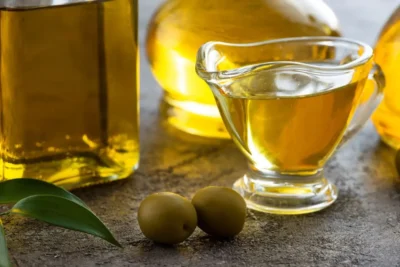Introduction
Imagine: you accidentally cut your finger while slicing vegetables, and within minutes, it becomes red, swollen, and painful. You’re witnessing inflammation—a vital process your body initiates to protect itself and begin the healing journey. But what exactly is inflammation, and why does it matter? Join me on a journey through understanding inflammation, from its basic mechanisms to its profound impact on our health and well-being.
What is inflammation?
Inflammation is your body’s natural response to injury, infection, or irritation. It’s like a fire alarm going off in your body, signaling that something isn’t right and mobilizing your immune system to address the issue. Wounds wouldn’t heal without inflammation, and infections could spread unchecked, leading to serious consequences.
Causes of inflammation:
Acute inflammation usually results from injuries or infections.
Everyday factors in your environment, like what you do daily and contact with harmful substances, are often responsible for chronic inflammation. Typical causes include:
- No exercise
- Feeling stressed a lot.
- Being of high weight, especially if your belly is big,
- Having too many bad bacteria in your gut.
- Eating many foods that make your body swell up, like fried food or salty snacks,.
- Having trouble sleeping at night and not having a regular sleep schedule.
- Breathing in bad stuff like dirty air or chemicals.
- Smoking cigarettes or using other tobacco stuff.
- Drinking too much alcohol often.
Symptoms and manifestations:
The symptoms of inflammation can vary depending on the affected tissue and the underlying cause. Inflammation in the joints may cause stiffness and swelling, while inflammation in the respiratory tract can lead to coughing and wheezing. Systemic inflammation, which affects the whole body, may manifest as fatigue, fever, and loss of appetite. By paying attention to these signs, you can better understand your body’s response to injury or illness.

Types of inflammation:
There are two main types of inflammation: acute and chronic. Acute inflammation is your body’s immediate response to injury or infection, characterized by redness, swelling, heat, and pain. It’s a short-lived process aimed at neutralizing threats and initiating tissue repair. On the other hand, chronic inflammation is a persistent, low-grade response that can linger for weeks, months, or even years. Unlike acute inflammation, chronic inflammation can harm healthy tissues and contribute to various diseases.
The Inflammatory Process:
At the heart of inflammation lies a complex interplay of immune cells, signaling molecules, and tissue responses. When tissues are injured or infected, immune cells such as neutrophils and macrophages rush to the scene, releasing cytokines and other chemical messengers that amplify the inflammatory response. These mediators increase blood flow to the affected area, recruit more immune cells, and stimulate tissue repair mechanisms.
Consequences of Chronic Inflammation:
While acute inflammation is essential for healing, chronic inflammation can seriously affect your health. Research has linked chronic inflammation to a wide range of conditions, including heart disease, diabetes, cancer, and neurodegenerative disorders. By promoting tissue damage, disrupting normal cellular functions, and driving immune dysfunction, chronic inflammation sets the stage for disease development and progression.
Chronic wounds:
Fixing cuts and wounds needs a lot of different cells to work together. When this process doesn’t work right, it can cause diseases like pyoderma gangrenosum. This disease makes wounds stay open and causes long-lasting swelling, but we’re not sure why. Scientists are trying to understand how different cells talk to each other during swelling and healing. They’ve been studying fish called zebrafish because they can grow back body parts. Zebrafish are easy to study because their bodies are see-through and scientists can change their genes. This review talks about how scientists are learning from zebrafish to understand how swelling and healing work together to fix wounds.
What are the symptoms of acute inflammation?
When a certain area of your body gets hurt, you might observe:
- Skin that looks different in color or appears red.
- You may feel slight pain or tenderness, limited to the injured area.
- You might notice swelling in the injured part, like inflammation around the knee.
- If you touch the skin near the injury, it may feel hot or warmer than usual.
- You may find it hard to move or use the injured body part as usual.
What are the symptoms of chronic inflammation?
Chronic inflammation symptoms can be more subtle compared to acute inflammation. You might experience:
- Discomfort or pain in the abdomen.
- Pain or discomfort in the chest region.Difficulty falling asleep or staying asleep.Elevated body temperature.Discomfort or limited movement in the joints.Irritation or sores inside the mouth.Abnormal changes in skin texture or appearance.Feeling persistently sad or hopeless.Digestive problems such as diarrhea, constipation, or heartburn. An increase or decrease in body weight is not intentional.
- Getting sick often with colds, flu, or other infections.
Reducing Inflammation Naturally:
The good news is that you can take steps to reduce inflammation and support your body’s healing processes naturally. A healthy diet rich in fruits, vegetables, whole grains, and omega-3 fatty acids can help quench inflammation by providing antioxidants and anti-inflammatory nutrients. Regular exercise, stress management techniques, and adequate sleep also play crucial roles in modulating the inflammatory response. Additionally, certain supplements, like turmeric, ginger, and fish oil, have been shown to have anti-inflammatory properties and may complement your efforts to combat inflammation.

Here’s a more detailed anti-inflammatory food chart categorized by food group, along with specific examples:
Fruits:
- Berries: Blueberries, strawberries, raspberries, and blackberries
- Citrus Fruits: Oranges, lemons, grapefruits
- Tropical Fruits: Pineapple, Mango and Papaya Paya
- Apples: are rich in quercetin, a flavonoid with anti-inflammatory properties
Vegetables:
- Leafy Greens: Spinach, kale, and Swiss chard
- Cruciferous Vegetables: Broccoli, cauliflower, and Brussels sprouts
- Tomatoes: are particularly rich in lycopene, a powerful antioxidant
- Peppers: Bell peppers, chili peppers, and jalapeños
- Carrots: are high in beta-carotene, which converts to vitamin A with anti-inflammatory properties
- Onions and Garlic: Contain sulfur compounds with anti-inflammatory effects
Whole Grains:
- Brown Rice: is rich in fiber and various antioxidants
- Quinoa: is high in protein and contains anti-inflammatory phytonutrients
- Oats: Contains beta-glucans, a type of fiber with anti-inflammatory effects
- Barley: Contains beta-glucans and antioxidants
Nuts & Seeds:
- Almonds: are high in vitamin E and monounsaturated fats
- Walnuts: are rich in omega-3 fatty acids
- Flaxseeds: are an excellent source of alpha-linolenic acid (ALA), an omega-3 fatty acid
- Chia Seeds: are high in fiber and omega-3 fatty acids
Fatty Fish:
- Salmon: is rich in omega-3 fatty acids, particularly EPA and DHA
- Mackerel: High in omega-3 fatty acids and vitamin D
- Sardines: Excellent source of omega-3 fatty acids and calcium
- Trout: Contains omega-3 fatty acids and protein
Legumes:
- Beans: Black beans, kidney beans, lentils, and chickpeas
- Peas: Green peas, split peas
- Soybeans: Edamame, tofu, and Tempeh
- Lentils: rich in fiber and protein, low in fat:
Herbs & Spices:
- Turmeric: Contains curcumin, a powerful anti-inflammatory compound
- Ginger: Contains gingerol, which has potent anti-inflammatory and antioxidant effects
- Garlic: Contains allicin, which has anti-inflammatory properties
- Cinnamon: Contains cinnamaldehyde, with anti-inflammatory and antioxidant effects
Healthy Fats:
- Olive Oil: is high in monounsaturated fats and contains oleocanthal, an anti-inflammatory compound
- Avocado: Rich in monounsaturated fats and antioxidants
- Coconut Oil: Contains lauric acid, which has anti-inflammatory properties
Remember to include a variety of these foods in your diet to maximize their anti-inflammatory benefits. Additionally, combining them with a healthy lifestyle, adequate hydration, and regular exercise can further enhance their effects.
What are examples of foods that cause inflammation?
- Foods with trans fat.
- Fried foods, like burgers and fries from fast food places.
- Processed meats like hot dogs or some lunch meats with added chemicals.
- Foods with a lot of salt.
- Sugary stuff, pastries, and white bread.
How can I prevent inflammation?
You can’t change some things that cause swelling in your body. But sometimes, you can do things to reduce your chances of having long-lasting swelling. Here are some tips:
- Try to walk or do other activities that make you move for at least 30 minutes, 5 days a week.
- Don’t smoke or use anything with tobacco. Ask your doctor for help if you want to quit.
- Eat lots of fresh foods and stay away from packaged foods as much as possible.
- Keep your weight in a healthy range for you.
- Don’t drink too much alcohol.
- Ask your doctor how to protect yourself from bad stuff in the air or chemicals
Care and Treatment:
How do you reduce inflammation in the body quickly?
Inflammation sometimes goes away on its own. If it’s short-term, you can often feel better in a few days by:
- Rest the sore part of your body.
- Put something cold on the affected area for 15-20 minutes every few hours.
- Take good care of any cuts, scrapes, or burns.
- If you have long-lasting swelling, your doctor might suggest:
- Taking special
vitamins or other supplements can help. - Use medicines like ibuprofen, aspirin, or naproxen that you can buy without a prescription. But don’t use these for more than 10 days without talking to your doctor.
- You are getting a shot or taking pills that contain corticosteroids to lessen the swelling in a specific spot. Follow your doctor’s directions carefully when using these medicines.

Conclusion
Inflammation is not merely a nuisance; it’s a fundamental process that shapes our body’s response to injury and illness. By respecting the power of inflammation and taking proactive steps to manage it, we can safeguard our health and vitality for years to come. So, the next time you feel the heat of inflammation, remember—it’s your body’s way of saying, “I’m healing.” Embrace it, nurture it, and let the journey to wellness begin.
I’d love to hear your thoughts on inflammation! Have you ever experienced acute or chronic inflammation? What strategies do you use to manage it? Share your experiences and questions in the comments below!



